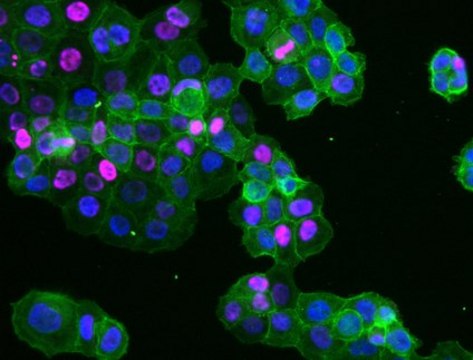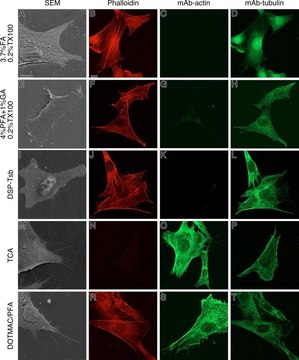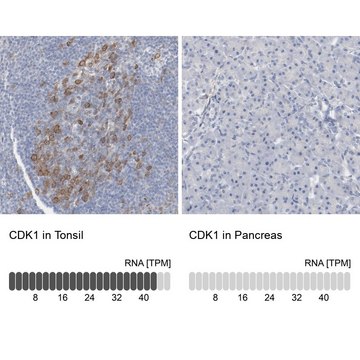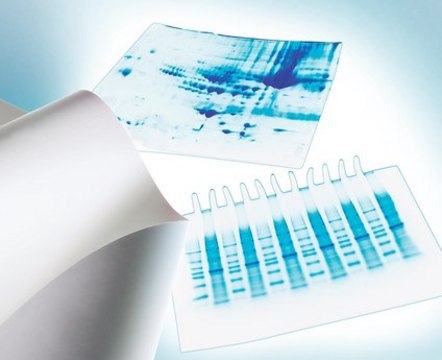AP160C
Rabbit Anti-Mouse IgG Antibody, Cy3 conjugate
Chemicon®, from rabbit
Sign Into View Organizational & Contract Pricing
All Photos(1)
UNSPSC Code:
12352203
eCl@ss:
32160702
NACRES:
NA.46
Recommended Products
biological source
rabbit
Quality Level
conjugate
CY3 conjugate
antibody form
F(ab′)2 fragment of affinity isolated antibody
antibody product type
secondary antibodies
clone
polyclonal
species reactivity
mouse
manufacturer/tradename
Chemicon®
technique(s)
immunofluorescence: suitable
shipped in
wet ice
target post-translational modification
unmodified
Related Categories
Specificity
Reacts with Mouse IgG gamma chain, as well as the light chains from all Mouse immunoglobulin classes.
Monospecific on IEP against whole Mouse Serum.
FLOUROPHORE/PROTEIN RATIO:
A552/A280 = 2.46
Monospecific on IEP against whole Mouse Serum.
FLOUROPHORE/PROTEIN RATIO:
A552/A280 = 2.46
Application
Detect Mouse IgG using this Rabbit anti-Mouse IgG Antibody, Cy3 conjugate validated for use in IF.
Storage and Stability
Store at +2-8°C. Do not freeze. After opening, restore to 1.1mL with distilled water. As an undiluted liquid the product is stable at 2-8°C for several weeks. For extended storage after reconstitution, we suggest the addition of an equal volume of glycerol to make a final glycerol concentration of 50% followed by storage at -20°C, with or without aliquoting. Exp. Date: 1 year from reconstitution.
Other Notes
Concentration: Please refer to the Certificate of Analysis for the lot-specific concentration.
Legal Information
CHEMICON is a registered trademark of Merck KGaA, Darmstadt, Germany
Hazard Statements
Precautionary Statements
Hazard Classifications
Aquatic Chronic 3
WGK
WGK 3
Certificates of Analysis (COA)
Search for Certificates of Analysis (COA) by entering the products Lot/Batch Number. Lot and Batch Numbers can be found on a product’s label following the words ‘Lot’ or ‘Batch’.
Already Own This Product?
Find documentation for the products that you have recently purchased in the Document Library.
Chizue Hiruta et al.
Zoological science, 29(11), 733-737 (2012-10-31)
In most animal species, centrosomes, the main microtubule-organizing centers, usually disintegrate in oocytes during meiosis and are reconstructed from sperm-provided centrioles before the first cleavage division. In parthenogenetic oocytes, however, no sperm-derived centrosome-dependent microtubule nucleation is expected, as fertilization does
Aurélie Allais-Bonnet et al.
FEBS open bio, 6(1), 4-15 (2016-04-06)
Three genes of the prion protein gene family are expressed in gonads. Comparative analyses of their expression patterns in mice and goats revealed constant expression of PRNP and SPRN in both species and in both male and female gonads, but
Golan Karvat et al.
Proceedings of the National Academy of Sciences of the United States of America, 118(25) (2021-06-23)
The interaction between spontaneous and externally evoked neuronal activity is fundamental for a functional brain. Increasing evidence suggests that bursts of high-power oscillations in the 15- to 30-Hz beta-band represent activation of internally generated events and mask perception of external
Our team of scientists has experience in all areas of research including Life Science, Material Science, Chemical Synthesis, Chromatography, Analytical and many others.
Contact Technical Service



